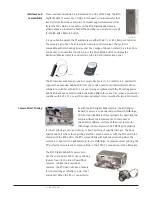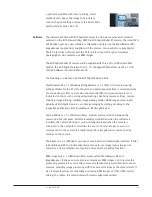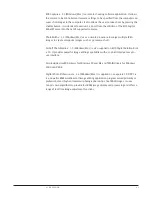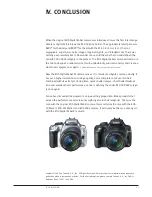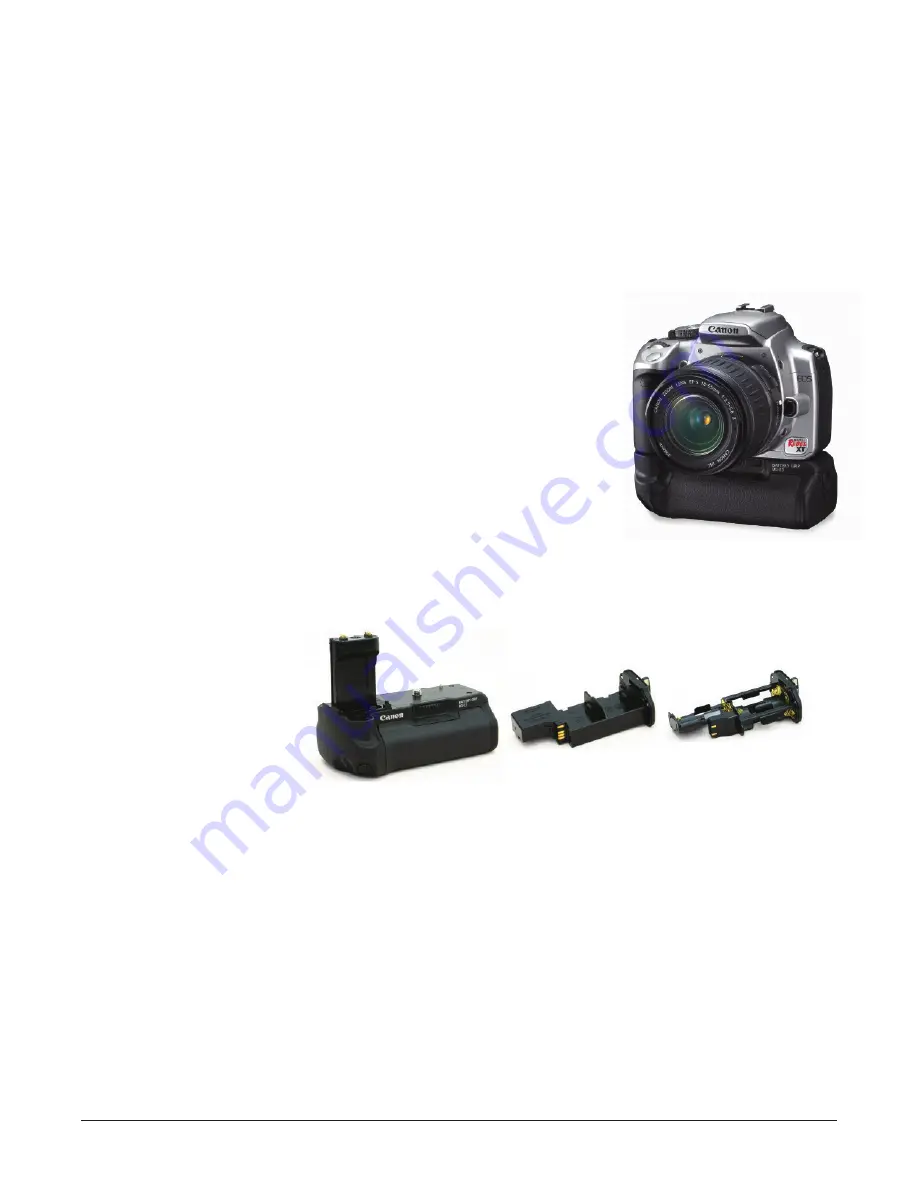
III. DISCUSSION
20
Power Management
Recording System
The EOS Digital Rebel XT camera is powered by the NB-2LH lithium-ion rechargeable
battery pack. This battery is much smaller and lighter than the BP-511 used in the EOS
Digital Rebel camera and is a key to the approximately 25% reduction in volume of the
new camera relative to its predecessor. The NB-2LH has only 65% of the capacity of a
BP-511 (720 mAh vs. 1100 mAh), but the new camera is 35% more energy efficient,
primarily because of the DIGIC II image processor. As a result, the XT can take the same
number of shots on a single NB-2LH battery pack as the original EOS Digital Rebel camera
with a BP-511. With a fully charged NB-2LH at 20º C/68º F, the XT can take approximately
600 shots without flash, or approximately 400 shots with 50% flash use.
It is possible to double the shooting capacity of the
EOS Digital Rebel XT camera by using the new BG-E3
accessory battery grip that can hold one or two
NB-2LH battery packs in battery magazine BGM-E3L.
If two batteries are loaded, power is initially drawn
from the one having the higher voltage. When the
voltage level of the two batteries reaches the same
level, power is drawn from both packs. When battery
magazine BGM-E3A is used, the BG-E3 can hold six
size AA batteries. They can be alkaline, lithium or
Ni-MH. As with the EOS 20D with the BG-E2, the use of
AA batteries should be considered only as a last resort. The NB-2LH is used in several
Canon PowerShot S-series cameras, as well as a variety of Canon Mini-DV camcorders,
so it is a standard stock item at many Canon dealers.
As with the BP-511A, the battery cover of the NB-2LH has a little hole whose orientation
can be used to remind one whether the battery has been recharged or not. That
recharging takes about 90 minutes in the supplied CB-2LT battery charger. Available as
an accessory, the AC Adapter Kit ACK700 allows the XT to run on external power.
The DIGIC II image processor in the EOS Digital Rebel XT camera brings with it several
major improvements over the original DIGIC in the EOS Digital Rebel camera. It uses a
newly developed algorithm that gives much faster data signal processing while
consuming much less power. Color reproduction of high-saturation, bright subjects is
improved, as is auto white balance precision, and there is a wider dynamic range in
highlight areas.


















